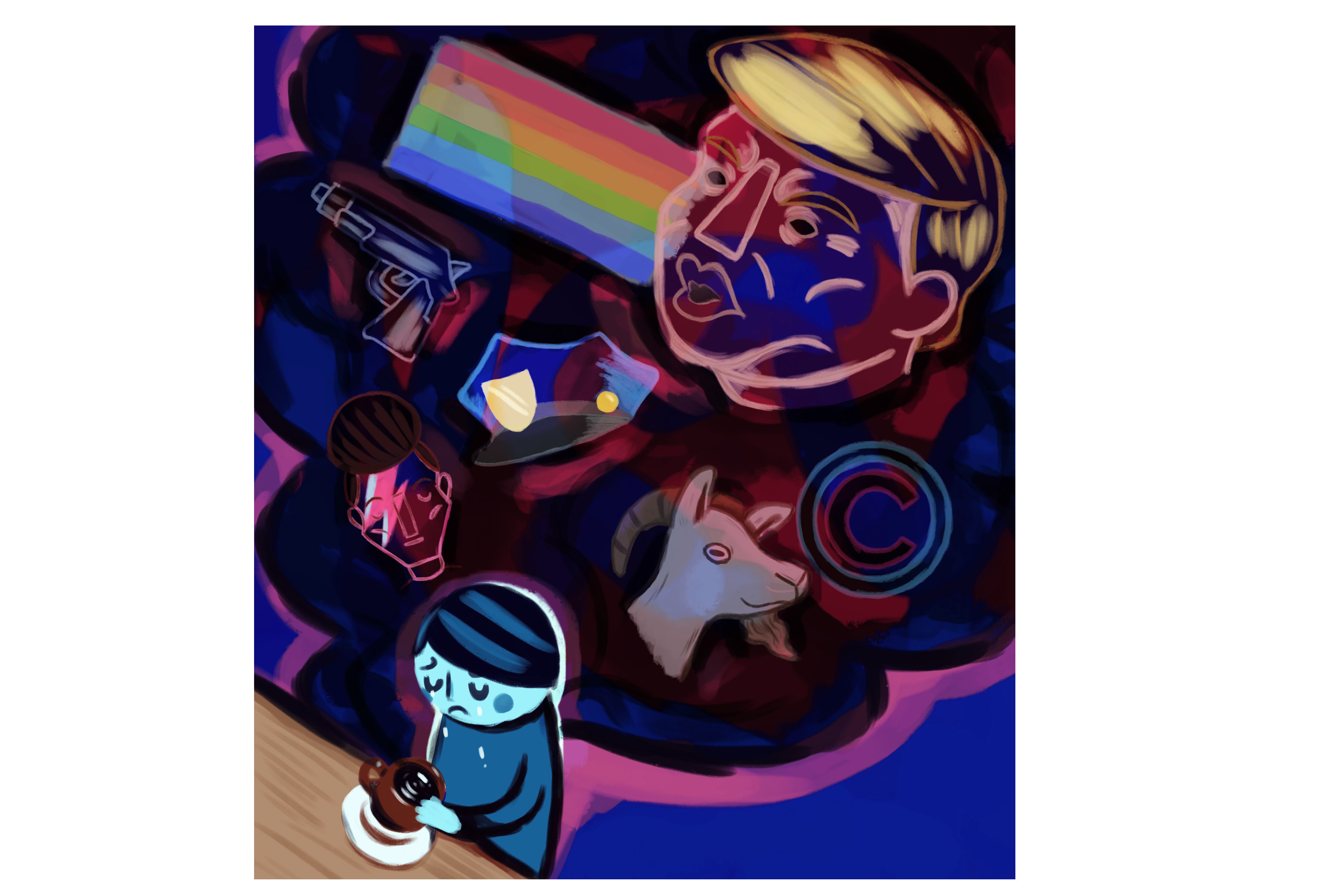Legal Graffiti
When one thinks of the term “graffiti,” the term “vandalism” often comes to mind. But today’s graffiti artists are working to break down this negative association while ensuring that graffiti stay true to its roots.
Some graffiti artists, or “writers,” as they often refer to themselves, are working to create more legal outlets for the art form, while others are focused on the style and providing a public forum for free expression.
Some Portland companies are taking steps to give graffiti the same stage and recognition that it achieves on train cars, walls and other illegal canvases, but without the risk of getting arrested and without the negative connotation that comes with the art.
Most recently, through the combined effort of Rumblefish, Adidas and Clear Channel, there are three billboards that display the art of three local graffiti writers: Joker, Sasquatch 23 and Spore. The three graffiti artists, like many other graffiti artists, prefer that their names not be used for fear of legal retribution.
“I started out throwing up gang tags when I was about 12 in Oakland,” Sasquatch 23 said, “After seeing really well-done pieces in New York and San Francisco, I moved to really improving and refining my style. More kids need to be exposed to better art to improve what their influences are, but there’s nothing good for them to look at [in Portland].”
Sasquatch 23 explained how Portland covers up most graffiti very rapidly, making it difficult to create nice looking pieces. “Bombing,” the act of tagging simple names and phrases in as many places as one can, has become the more prominent facet of graffiti in the city. This style, which is similar to gang-style graffiti, is known to damage more property and widely considered to be an assault on the eyes.
The billboard project, which has been named the “Not a Crime” campaign, was started by Paul Anthony, CEO of Rumblefish, after hiring some local graffiti artists, including Sasquatch 23, to paint a mural on the floor of his company’s office.
“He wanted to help give the artists a place to paint,” said Merida Damewood, music director at Rumblefish. “He sympathized with the boys’ complaints of lack of spaces to paint and called up Clear Channel.”
Clear Channel agreed to donate three billboards, while Rumblefish and Adidas furnished the artist’s paint and paid for the printing cost to transfer the murals to billboards. Billboards were chosen as canvases for the artists due to the complicity of getting permits to paint legal wall murals within city limits.
Each billboard was covered with a mural and the words “Not a Crime.” In addition, each billboard had a unique message such as “not an eye sore” or “not a gang member” in hopes to impact the public’s opinion of the art and sway them from possible stereotypes they might have.
While some graffiti is gang-related and some may very well consider the markings an “eye sore,” the billboard’s message is clear: amongst graffiti there lies true art.
Beyond covering up the illegal graffiti, Portland sign codes have created hurdles for businesses interested in allowing murals on their exterior walls. New American Casuals, a local apparel and art supply store, has been covered in several local newspapers due to its struggles with the city over graffiti. New American Casuals has displayed graffiti on its exterior walls since 2003. The graffiti was created by a wide array of local and out-of-town artists. But the business will soon be closing its doors, leaving one less place for such artists to paint legally.
“Most large cities have some sort of legal walls for artists to paint on,” said an artist who asked to remain anonymous. “If we had walls that we could paint, we wouldn’t need to paint illegally.”
Legal walls have been built or donated in cities such as Houston, Sacramento and Seattle, but the general opinion from graffiti prevention organizations in cities implementing such plans has been generally consistent: it doesn’t reduce the illegal graffiti. While some argue that legal graffiti should still exist to give an outlet to aspiring artists who use aerosols as their medium, many communities remain focused largely on graffiti removal and prevention.
For this reason the “Not a Crime” campaign hopes to win the community’s embrace. The campaign will end soon without sponsorship. Coupled with the closing of New American Casuals, the graffiti community may once again be without a place to be represented. However, artists such as Sasquatch 23 said they were working with organizations such as the Regional Arts and Culture Council to create public art projects that may possibly display this art form’s brighter side.




